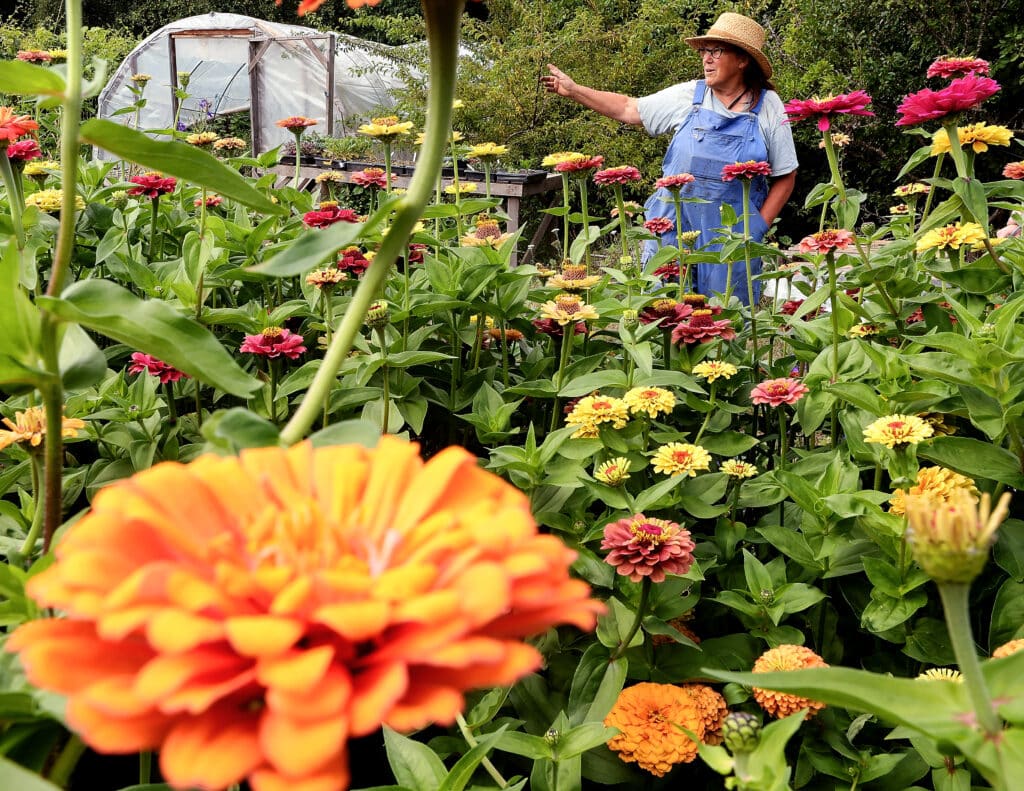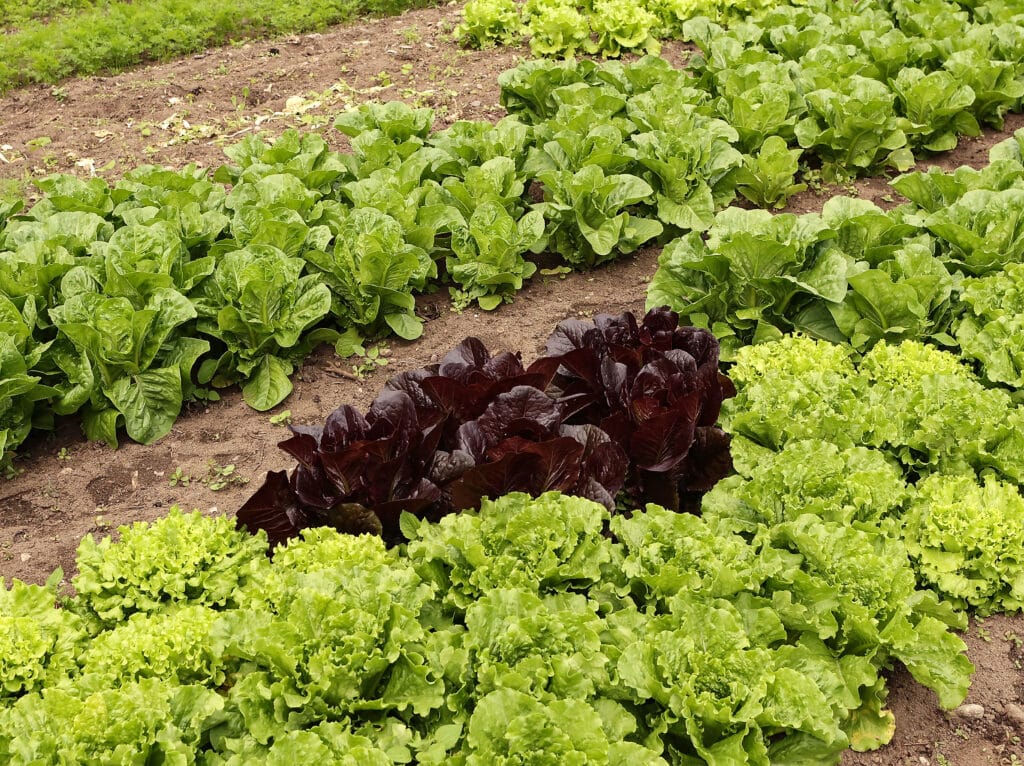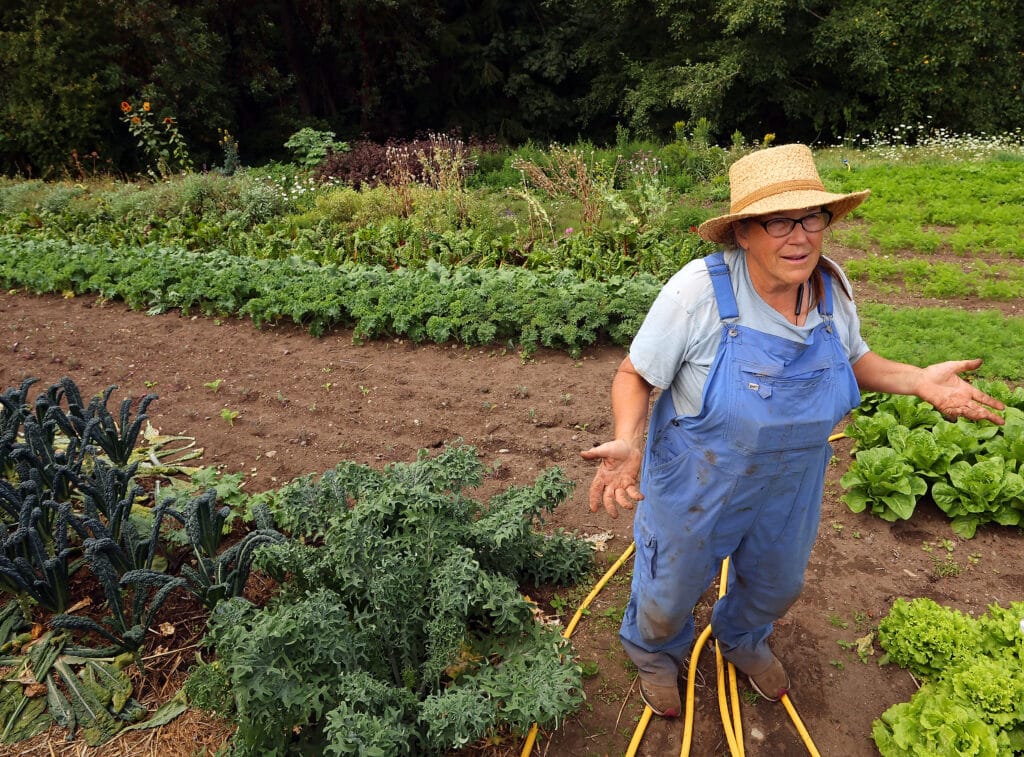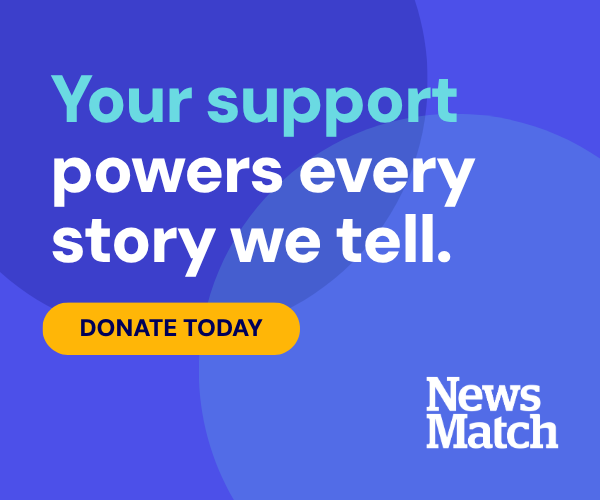Business Community Health & Wellness
Food banks, farmers reeling after elimination of purchasing assistance program
Farming only a short drive from two affluent communities, Lousia Brown rarely has trouble finding a market for the spinach, kale, lettuce and other produce she grows. At the Poulsbo Farmers Market, it is not abnormal for her to sell out.
Health & Wellness Sponsor
Health and Wellness stories are made possible in part by Virginia Mason Franciscan Health, a proud sponsor of Gig Harbor Now.
Brown, 64, says the location of Pumphouse Farm is one reason her business has weathered recent economic trepidation. It’s on property near Indianola, in North Kitsap County close to Bainbridge Island and Poulsbo, that she has tended to for 25 years.
A more troubling contributor to her success, she posits, is the competition seems to only get slimmer.
“Farmers are dropping out,” she says. “The demand is there, but it’s hard to keep going.”
Food bank program eliminated
And more turbulence is on the horizon. Earlier this year, the Trump Administration abruptly axed funding for a popular federal program that paid local farmers to grow produce for food banks. That cut a critical revenue source for local farms as demand at food banks reached an all-time high.
Over the next few months, the Kitsap Conservation District will spend the remaining $40,000 provided by the Local Farm Purchasing Assistance program. The Biden-era initiative benefited more than a dozen Kitsap farms and eight regional food banks in the past three years.

Louisa Brown stands at the edge of her flower beds as she talks about her Pumphouse Farm in Indianola on Aug. 18. Photo by Meegan M. Reid/Kitsap Sun
“We probably have enough to get us through this growing season,” said Diane Fish, a program coordinator for the conservation district who is overseeing local distribution. “From there, it’s a sad story.”
Equally concerned about the loss are food banks. LFPA offered a lifeline, providing thousands of pounds of additional food during a period of record demand following the pandemic. Significantly less food is anticipated to enter food banks, while the need is expected to rise after the Trump Administration cut several food assistance programs.
“There will be fewer fresh local products and less culturally familiar food available at hunger relief organizations,” Jeff Mathias, farm to community specialist lead for the Washington Department of Agriculture, wrote in an email. “At the same time, the need for food assistance is at an all-time high.”
More flexibility
Responding to supply chain hiccups created by the pandemic, the United State Department of Agriculture launched the LFPA program in July 2022. The initiative gave out $900 million to all 50 states under the stipulation they used those funds to buy locally grown foods – a majority of which came from unrepresented groups in agriculture – and distribute them at hunger relief agencies like food banks.
In Washington, those funds have reached all 39 counties, 32 tribal organizations, 255 food banks and 461 hunger relief agencies, according to the Washington State Department of Agriculture.
Kitsap County alone has received over $200,000, Fish said, money that has made a huge difference for producers. The Kitsap Conservation District has participated in a state funded farm-to-pantry program, which is similar to LFPA, but nets much less money. In recent years they’ve gotten about $11,000 to $12,000 annually.

Lettuces grows a field at Pumphouse Farm in Indianola on Aug. 18. Photo by Meegan M. Reid/Kitsap Sun
Farmers estimate months in advance how much to grow for the upcoming season. It is a difficult balancing act, even for experienced farmers, that can inevitably leave unsold but edible crops with no buyer. Often these foods wind up as compost or animal feed.
LFPA dollars eliminate a lot of this waste, Fish said. For example, a grocery store canceled an order of winter squash from one farmer. They bought all 500 pounds of the crop for the food banks. They scooped up 50 pounds of surplus spinach from another producer.
An incentive for farmers
Knowing that extra food could easily be sold to the food bank incentivized farmers to grow more and provided a boom for business, Fish said. For some farms, selling to food banks comprised between 20-30% of their revenue over the past few years.
“There was no uncertainty,” Fish said. “You know, regardless of how many people are going to come to the farmer’s market, you knew that you were gonna be able to sell it.”
Carrying broad support, the Biden Administration announced a plan to extend the LFPA program. In December, the USDA pledged an additional $1.13 billion for it and a companion initiative providing food for schools. The Trump Administration eliminated both.
The administration told the news website Politico the programs “no longer effectuate the goals of the agency” and that previously announced funds would no longer be available.
The Kitsap Conservation District has until the end of the year to allocate its remaining funds. The timing has been far from ideal. Farmers, assuming the additional LFPA funding would be available, had already made plans for the upcoming season.
“When March rolled around, and the Trump Administration killed [LFPA], they’d already put seeds in the ground,” Fish said.
‘You can’t survive off ramen’
The loss will be a major blow to food banks. Chris Benson, executive director of the Central Kitsap Food Bank in Silverdale, said the nonprofit got 2,800 pounds of fresh produce last October and another 7,800 pounds in June.
That will now drop to 300 pounds per month, he said.
They will also lose out on fresh, nutrition-rich produce, which some food banks struggle to obtain. Food drives or donations most frequently consist of nonperishables and processed foods.
“I get that ramen works in a crunch,” Benson said, “but you can’t survive off of ramen, not in a healthy manner.”

Pumphouse Farm’s Louisa Brown talks about the produce from her Indianola farm that ends up at the area food banks. Photo by Meegan M. Reid/Kitsap Sun
Representative for the Bremerton Foodline did not return a request for comment, but in a social media post the agency wrote it was saddened that LFPA funding was ending: “For a community facing high rates of diabetes and heart related condition fresh, nearby-harvested food isn’t just a treat – it’s vital.”
It will be almost impossible for food banks to backfill the money lost. Many will now supplement the losses with their own dollars, meaning less to spend elsewhere.
Some food banks said they would be less affected by the cuts. Pam Leazer, executive director of the Gig Harbor Peninsula FISH Food Bank said her agency had not benefited from these funds. Jennifer Hardison, of South Kitsap Helpline in Port Orchard, said they have enough relationships with individual producers to avoid significant impacts.
Increased need
Still, nearly all food banks in the region face a growing demand for their services.
Food banks across the region saw an almost immediate uptick in shoppers after the expiration of pandemic-era benefits, which expanded who qualified for food assistance programs. Central Kitsap, for example, saw a 46% increase in families, Benson said, going from serving 20 to 30 families on average day to now providing for nearly 60.
Charlie Thompson, executive director of Fishline food bank in Poulsbo, said they have seen a 20% increase in families over the last year that has put a “real strain on their capacity.” The food bank expects to give out over a million pounds of food this year, he said, about double what it was doing pre-pandemic.
Thompson described the current situation as “death by a thousand cuts.” Several food assistance programs are being reduced or being cut. The Trump Administration cut The Emergency Food Assistance Program, also known as TEFAP and reduced spending for SNAP benefits, commonly called food stamps.
Vicious circle
A million Washington SNAP beneficiaries will see their benefits reduced by an average of $56 per month, according to a statement by Washington Gov. Bob Ferguson. With fewer dollars to spend via food stamps, residents are expected to lean more heavily on food banks, Thompson said, which will have “less food to offer.
“It’s a really difficult situation and I know Fishline and other food banks in Kitsap, we’re all putting our heads together to brainstorm ways that we can get more food for our shelf so we can meet what we believe is going to be an ongoing need,” he said.
“When the SNAP cuts are realized it’s going to be another cliff moment where we see just this real spike, I think, in people coming more frequently. Many of them are already coming, but they’re going to need more support.”
‘I really do believe in it’
The Kitsap Conservation District plans to launch a donation fund to support a local farm-to-food bank, Fish said. She cautioned that “nothing is going to replace the tremendously positive impact of LFPA” dollars.
Brown, the Indianola farmer, says she will not close as a result of the drop in LFPA funds. Selling to the food banks accounts for about 15% of her revenue, she said. Not insignificant, but she has other avenues for sales, including farmers markets, her food stand and a store in Indianola.
The loss of the LFPA dollars though is still difficult. Brown is a proponent of giving her produce to the food bank and allowing those with lower incomes to enjoy her foods.
That program is a general good for the community, but prioritizing the food bank as part of her business, without LFPA funds, is now more challenging.
Profits were never as good as selling to retail, she said, but there was always a return. Now she has decided if financially, that option still makes sense.
“It’s hard because I really do believe in it,” she said.


